Don't wanna be here? Send us removal request.
Text
Here we see the header, the number of columns and rows of the Data set and additionally the name of every variable and question referred.
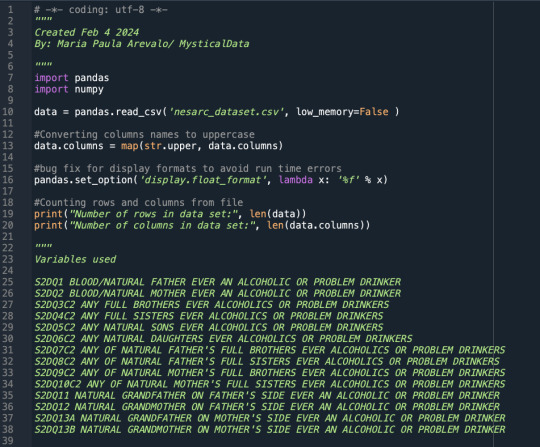
Then, checked the data type and converted every variable to numerical.
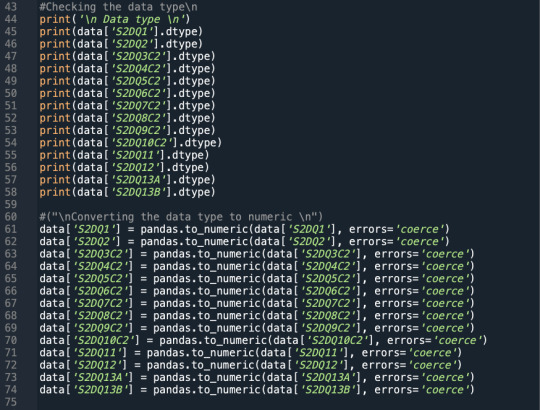
Later, calculated the frequency distributions for the variables (counts and percentages), here I just show you part of it since 14 variables It's a little too much, but in the next pictures you can see the results for each and every variable I used.

In the final part of the code, a sub set of data and a copy were created. I chose to use the alcohol consumption and the census from the South as filters.
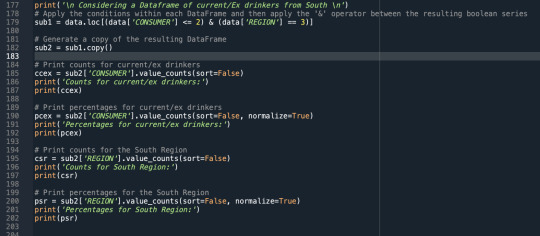
These are the results obtained in the console terminal. First, the data type from integers to numbers.

The first 4 variables, the direct familiar circle Father, mother, brothers and/or sisters; The percentages indicate higher frequencies for male relatives (18,9 % for fathers and 14,4% for brothers) than female relatives (5,8% for mothers and 6,3% for sisters).
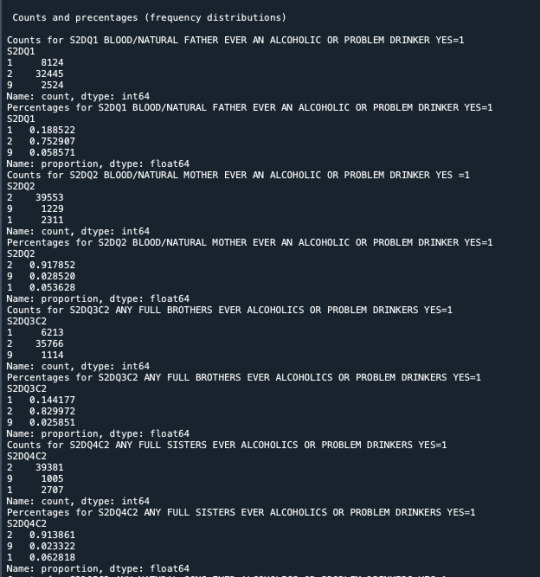
Now, about sons and daughters with alcoholism problems, the percentages are quite small. Still, the frequency for alcoholic sons (4,1%) is higher than alcoholic daughters (2,1%)

Next, brothers and sisters from the parents showed a similar pattern, organized in descendig order the percentages of alcoholism were: Mother's brothers 16,6%, Father's brothers 15,4%, Mother's sisters 7,0% and Father's sisters 5,6%.
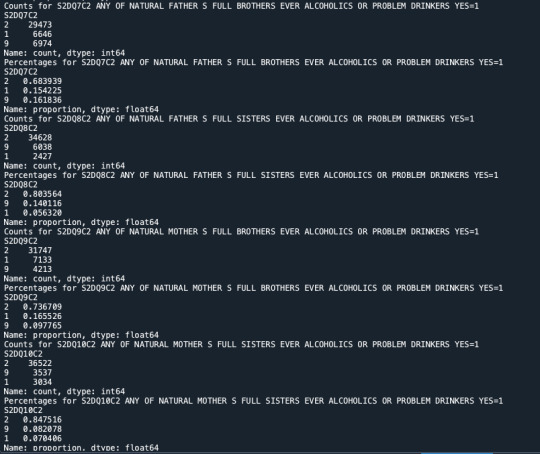
Finally, about grandmothers and grandfathers the tendencies are similar to those of daughters and sons. So, Grandfathers from fathers side and mother's side have the higher percentages from this section, 8,2% and 9,2% correspondingly versus the grandmothers of each side with about 2%.
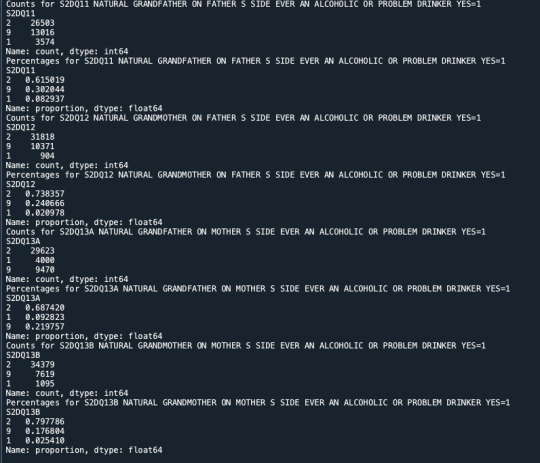
The subset and the counts and percentages are shown here

In conclusion, the alcoholism it's most frequent in the male relatives of the family and the highest frequencies are observed in the people belonging to the nuclear family (fathers and brothers ). However, it's necessary to refine the data to get to a better understanding of the information.
0 notes
Text
Refining the research question
Is there a hereditary trend or pattern for alcoholism present in current drinkers or ex-drinkers from the South region?
0 notes
Text
Change directions
Considering some trouble with the variables I chose from the data set, I will change the research question to: Is there a hereditary trend for alcoholism? That way I can consider 4 generations Grandfathers/Grandmothers, Fathers/Mothers, Individuals and their offspring and the frequency or trends of alcoholism along the generations.
0 notes
Text
First Task
Hi! I'm Maria and i'm currently taking a Data analysis course. I will be working with a data set called NESARC - National Epidemiologic Survey of Drug Use and Health Code Book, trying to answer to the question Are the familiar history of alcoholism and the generalized anxiety related? Taking on account the studies reviewed and the experiment carried out by Merikangas et.al (1998) where they studied the patterns of familial aggregation and co-morbidity of alcoholism and anxiety disorders in the relatives of 165 people selected from treatment programs or at random. The results showed:
"(1) alcoholism was associated with anxiety disorders in the relatives, particularly among females;
(2) both alcoholism and anxiety disorders were highly familial;
(3) the familial aggregation of alcoholism was attributable to alcohol dependence rather than to alcohol abuse, particularly among male relatives; and
(4) the pattern of co-aggregation of alcohol dependence and anxiety disorders in families differed according to the subtype of anxiety disorder"
Considering that information, the expected result is a positive relation between the variables selected (mentioned before).
If you want to know more about the article I mentioned you can purchase it at: https://www.cambridge.org/core/journals/psychological-medicine/article/abs/comorbidity-and-familial-aggregation-of-alcoholism-and-anxiety-disorders/0E13BB54FBE3C6AD7131B6F272FCB06F
Absolutely excited about de process! ^^
1 note
·
View note